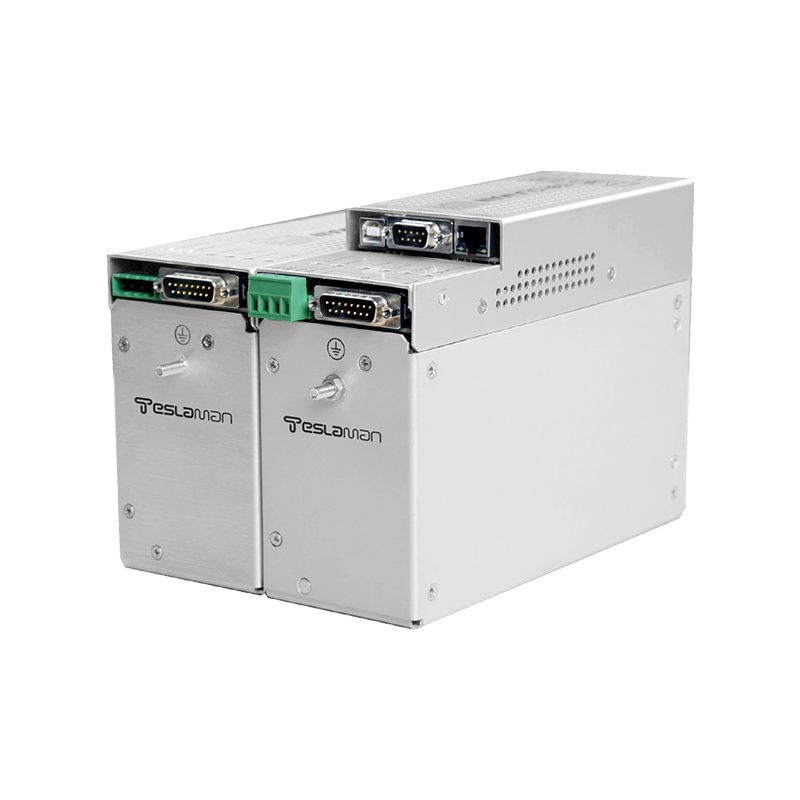Technical Solutions of High-Voltage DC Power Supplies in Power Transmission
In modern power systems, high-voltage direct current (HVDC) transmission technology has emerged as a core solution for optimizing energy distribution and enhancing grid stability, thanks to its exceptional capability in long-distance and high-capacity power transmission. As the energy conversion hub of HVDC systems, the technical design of high-voltage DC power supplies directly determines transmission efficiency, loss levels, and system reliability. This article explores the technical implementation paths of high-voltage DC power supplies across various scenarios, starting from the practical requirements of power transmission.
1. Core Functions of High-Voltage DC Power Supplies in Power Transmission
An HVDC transmission system converts electrical energy from AC grids into high-voltage DC for long-distance transmission and then reverts it back to AC for grid integration at the receiving end. In this process, high-voltage DC power supplies perform three key functions: First, they enable bidirectional conversion between AC and DC power through converter devices, with the rectifier side transforming three-phase AC into DC and the inverter side performing the reverse operation. Second, they achieve precise control of transmission power via a power regulation system, which can rapidly respond to grid load changes by adjusting the firing angle or modulation ratio. Third, they maintain the DC voltage within a ±0.5% fluctuation range using voltage stabilization techniques, ensuring power quality compliance.
2. Key Technical Solutions for High-Voltage DC Power Supplies
1. Converter Technology Solutions
The Modular Multilevel Converter (MMC) architecture is currently the dominant converter technology, generating a stepped-wave output by cascading multiple sub-modules, which significantly reduces harmonic content (total harmonic distortion <5%). Each sub-module consists of IGBT power devices and DC capacitors, with redundant designs enhancing system reliability. In specialized scenarios such as offshore wind power transmission, full-bridge sub-module topologies can clear DC-side faults autonomously, preventing system-wide cascading failures.
2. Insulation and Overvoltage Protection
To withstand voltage levels exceeding ±800kV, high-voltage DC power supplies adopt composite insulation structures: epoxy resin cast insulators are used for equipment within valve halls, offering a 30% increase in creepage flashover voltage compared to porcelain insulators. Cable insulation layers utilize cross-linked polyethylene (XLPE) materials, supplemented by nano-doping technology to mitigate space charge accumulation. Metal Oxide Arresters (MOAs) and Fast Earth Switches (FES) are also installed, limiting transient overvoltages to within 2.0 times the rated voltage during lightning strikes or switching operations.
3. Intelligent Control and Protection Systems
Dual-core control platforms based on Digital Signal Processors (DSPs) and Field-Programmable Gate Arrays (FPGAs) enable microsecond-level response times. By continuously monitoring parameters such as DC current, voltage, and converter valve temperature, and applying adaptive control algorithms, these platforms dynamically adjust triggering strategies. The protection system features hierarchical configurations, with fast protection actions occurring within <10ms, and dualized primary protection designs ensuring a misoperation rate of <0.1%.
3. Technical Adaptations for Typical Application Scenarios
In cross-regional grid interconnections, Voltage Source Converter HVDC (VSC-HVDC) technology allows for independent control of active and reactive power through its four-quadrant operation capabilities, effectively improving the voltage stability of AC grids. In urban distribution networks, medium-voltage DC (MVDC) solutions for distributed power integration enable plug-and-play connectivity for distributed energy sources such as photovoltaics and energy storage via bidirectional DC-DC converters, reducing harmonic pollution on the AC side.
Looking ahead, high-voltage DC power supply technology will evolve towards higher voltage levels (±1100kV) and greater capacities (10GW class). The adoption of silicon carbide (SiC) devices will boost converter efficiency to over 98%, and the integration of artificial intelligence-based fault diagnosis systems will enable predictive maintenance, propelling power transmission towards greater intelligence and carbon neutrality.




















